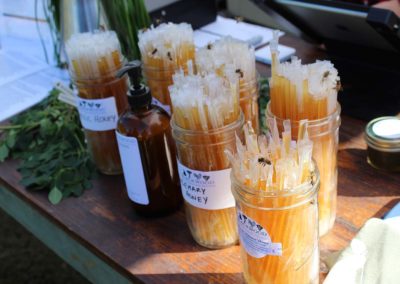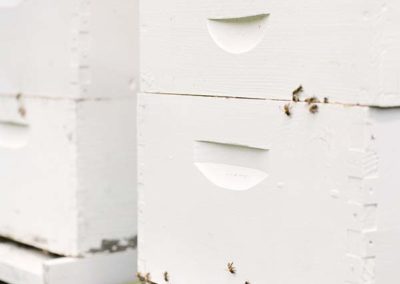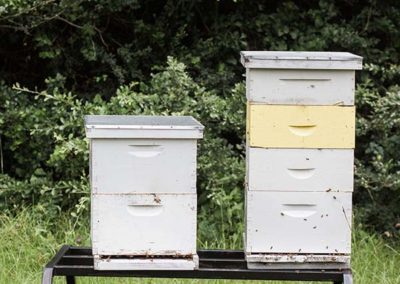Bees Serve Many Purposes
Blackwood Bees
Our bees serve many purposes – they pollinate our flowers and crops, provide us with honey and beeswax, and even make it possible for us to be part of the Texas Ag Exemption program!
Our bees serve many purposes – they pollinate our flowers and crops, provide us with honey and beeswax, and even make it possible for us to be part of the Texas Ag Exemption program! Located on the northwest part of our Land in the Coastal Prairie biome, you will find these busy bees buzzing away at one of our four hives. We have two hive varieties: box (pictured above) and top bar. To help you learn more about our little black and yellow friends, here are some fun bee facts!
Bees can recognize human faces through a process called configular processing. If they start to get too bothered, they’ll buzz around our face and hands to warn us to move a little further away.
Hives usually can have anywhere from 10,000 – 60,000 bees.
You will find three types of bees in a hive: the queen, female worker bees, and male drones:
• Queen bees are the largest bees and are the only egg-laying females in a hive. During the laying season, honey bee queens are capable of laying up to 1,000 – 2,000 bee eggs per day!
• Female worker bees make up most of the bee population in a hive and are responsible for everything besides reproduction. They attend to the Queen, clean the hive, build honeycomb, gather nectar & pollen, protect the hive, and more.
• Drone bees’ primary role is to reproduce with the queen. They do not have stingers and do not gather nectar or pollen.
After 3 days, bee eggs hatch into larvae, which are then fed honey, royal jelly, and other liquids from plants by worker bees. On day 5, larvae cells are sealed with wax caps. The then larvae surround themselves with a cocoon inside the cell and after 12 days in this pupa phase, on day 18, a fully developed baby bee will emerge! For a queen bee egg, this process takes around 24 days.
Inside the hive, honey is stored in frames. Depending on the size one frame can hold anywhere from 4 to 8 pounds of honey.
Honey is a natural antiseptic and is one of the only food products that, when bottled correctly, can be stored indefinitely.





